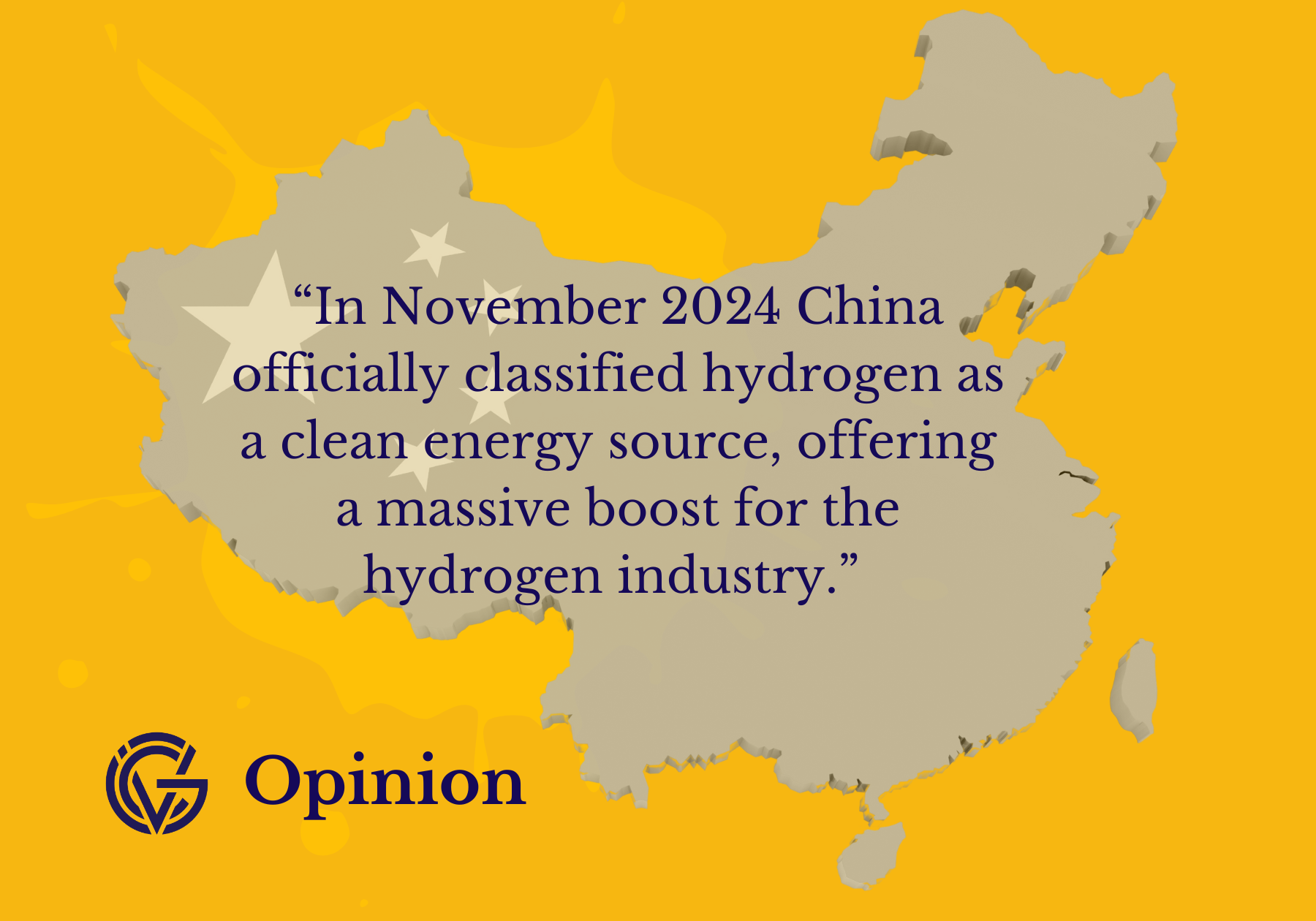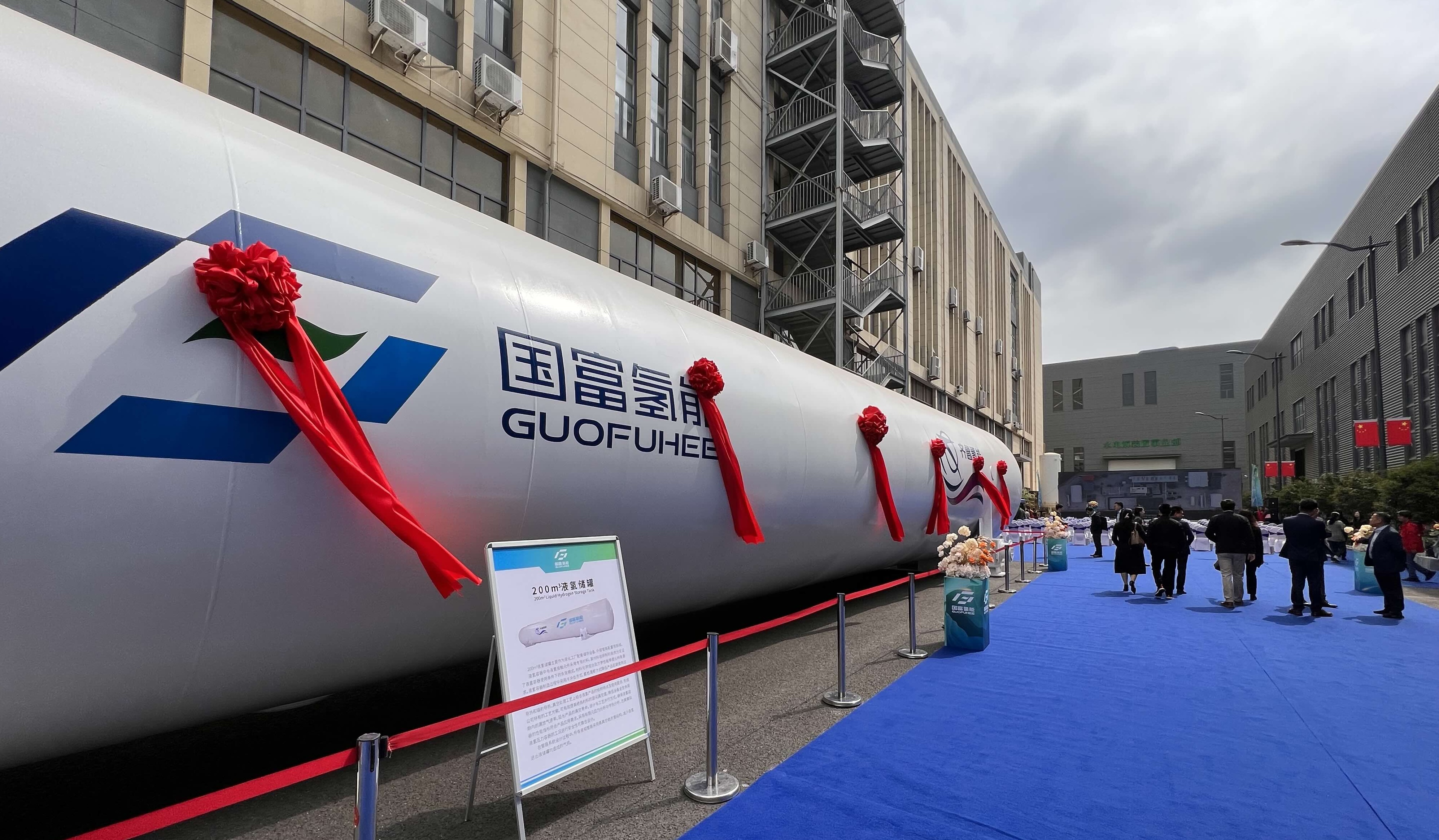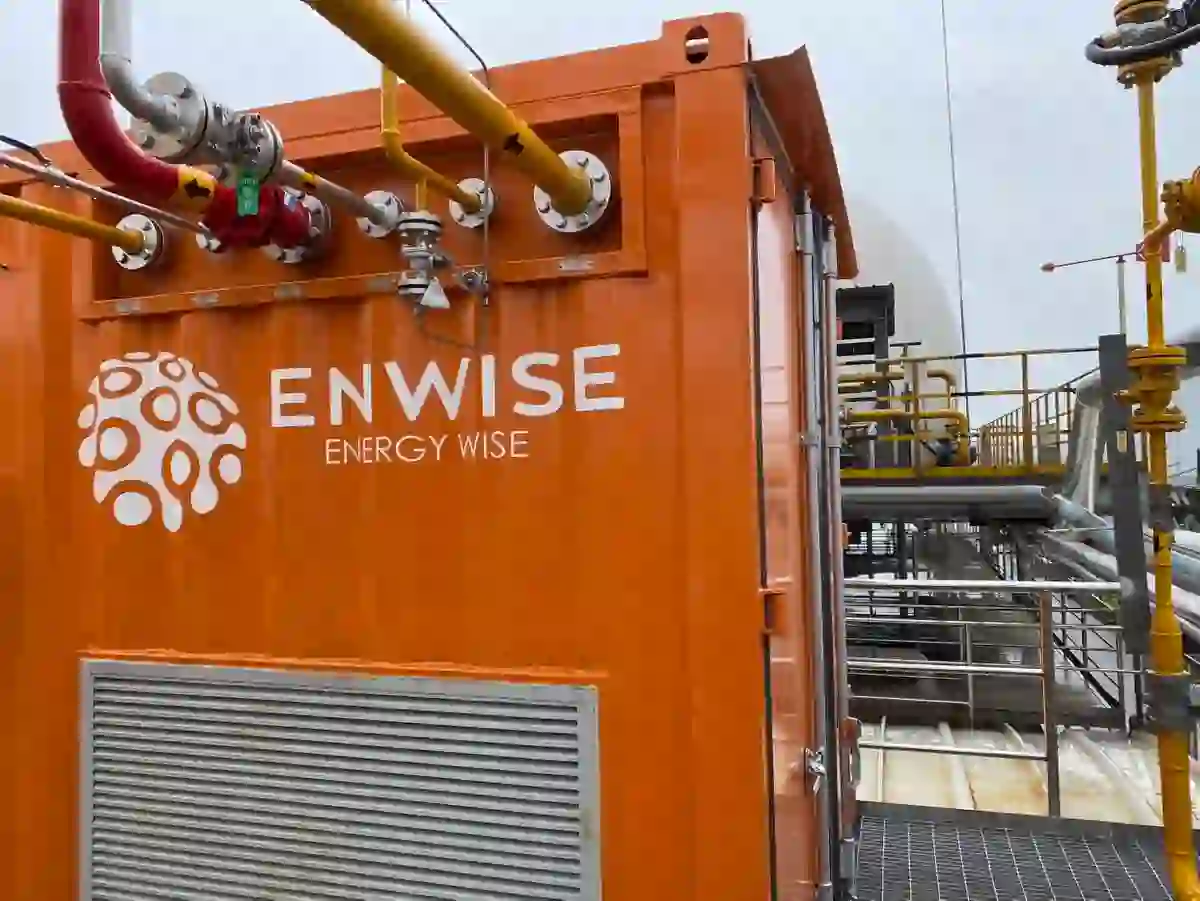Following the removal of a major regulatory obstacle to hydrogen production China is looking to ramp up production of this clean fuel source dramatically. These startups will help the transition take place.

China may still be the world’s biggest emitter of greenhouse gases, but the speed at which it is decarbonising its economy is astounding. Fossil fuels now make up less than half of China’s total installed generation capacity, down from two-thirds a decade ago, according to Yale Environment 360, the online magazine published by Yale School of Environment.
“In a world in which national climate targets are being missed, the speed and scale of expansion in China’s installed renewable capacity is unmatched,” the publication notes.
With a ‘3060’ commitment to reach peak carbon emissions by 2030 and carbon neutrality by 2060, China is transforming how it produces and uses energy. In 2022, China installed as much solar power capacity as the rest of the world combined. Then in 2023, it doubled that amount.
In 2023 alone, clean power made up 35% of China’s electricity mix, including hydroelectric power at 13%, and wind and solar at 16%.
Clean energy is also driving China’s economy. In 2023, renewables contributed 11.4trn yuan ($1.6trn) to the economy, making up all the growth in investments and becoming the biggest driver of economic growth in the country. Clean energy accounted for 9% of China’s GDP in 2023, up from 7.2% in 2022.
That could be set to accelerate further as China looks to the next big thing in clean energy: hydrogen. In November 2024, an updated energy law (能源法) officially classified hydrogen as a clean energy source, instead of a hazardous chemical. This removes the greatest obstacle for hydrogen production and transportation in China, and offers a massive boost for the hydrogen industry.
We’re backing the hydrogen startups that will drive this transition
We’ve been following the green hydrogen space for over a decade, starting in 2011 when we worked with US-based Air Products to test its viability. Back then our research showed it was far too early, as the technology – and more importantly, the infrastructure – wasn’t ready. But with domestic Chinese policy support and improving tech, hydrogen moved to becoming a viable, flexible energy source around 2020.
Today’s green hydrogen in China costs approximately 60 RMB/kg at the pumps on the east coast, but the price is rapidly falling, with a target price of 30 RMB/kg. Green hydrogen is available today at 16 RMB/kg (~ $2/kg) in the far west of China where there is abundant green electricity.
Hydrogen makes a near-perfect clean energy source: it’s the most abundant chemical element in the universe, it’s light, has three times more energy density than diesel/gasoline, and burns clean, with the only byproduct as water. Currently, it’s ideal for industrial purposes and power plants. For example, hydrogen is better for industrial transportation, such as trucks, planes or ships, because it negates the need for very heavy battery packs, and the rare earth materials that are needed to make them.
As of end of 2023, China had 387 renewable hydrogen projects planned: 80 under construction, 58 in operation, plus 20 newly commissioned projects. They contribute to a total renewable hydrogen capacity of approximately 56,000 tons/year. The target green hydrogen capacity is 6.43 million tons/year, with 78,000 tons/year already in operation. According to public data from the China Hydrogen Energy Industry Association, China has planned over 60 new green hydrogen projects from Jan-Nov 2023, with total investments exceeding 410 billion RMB (or see our research here).
To us, the logic behind hydrogen as a clean energy is sound when we take the plans for hydrogen energy in context globally:
- The EU plans to reach renewable hydrogen energy capacity of 10 million tons per year by 2030.
- The US plans to achieve 10 million metric tons per year of green hydrogen capacity by 2030.
- China’s green hydrogen project bids are surging: in the first half of 2023, a total of 14 electrolyser bidding projects were announced, with a total winning bid volume of 848MW, exceeding the entire 2022 annual volume.
- Middle Eastern countries have launched ambitious green hydrogen targets: Saudi Arabia aims to reduce carbon emissions by 278 million tons per year by 2030 and achieve “net zero” greenhouse gas emissions by 2060. In 2021, the UAE adopted a “Hydrogen Leadership Roadmap” with a goal of capturing a 25% share of the global low carbon hydrogen market by 2030. Oman targets generating 1GW of clean hydrogen (green and blue hydrogen) by 2025, 10GW by 2030, and 30GW by 2040, to become the world’s leading hydrogen producer/exporter.
Here are a few of the hydrogen startups we have backed as we have developed our thesis.
Guofu Hydrogen – hydrogen infrastructure

In 2019, we invested in Guofu Hydrogen in its series A round (and three times after) as we believed that hydrogen infrastructure and equipment would be a key part of the hydrogen economy. It paid off. In November 2024, Jiangsu Guofu Hydrogen Energy Equipment Company was officially listed on the HKEX.
Today we’ve achieved an 8X return on our 70m RMB overall investment, or approximately 20X on our initial A-round investment in Guofu in 2019.
Guofu Hydrogen offers four main product groups to support a clean energy industrial chain, from production to refuelling, storage and transportation. According to Frost and Sullivan, Guofu Hydrogen holds a leading market share in the supply of core hydrogen energy equipment across four sectors:
- Vehicular hydrogen supply systems and related products – in 2023, Guofu Hydrogen was ranked number one in the domestic market share of the industry.
- Hydrogen station equipment – Guofu Hydrogen maintained the top position nationwide for five consecutive years.
- Hydrogen liquefaction, liquid hydrogen storage and transportation equipment – Guofu Hydrogen is the first in China to develop and deliver the country’s first industrial-scale civilian hydrogen liquefaction equipment.
- Water electrolysis hydrogen production equipment (ALK and PEM) – Guofu Hydrogen is one of the few Chinese companies with the capability to switch between ALK and PEM hydrogen production to achieve better cost-efficiencies or penetrate a broader market.
Coined as a ‘Little Giant’ in the Chinese hydrogen energy industry, Guofu Hydrogen has formed a strong supply chain integration capability across the hydrogen energy equipment market.
Dynamic Hydrogen – bringing down the cost of hydrogen production
More recently, we invested in Dynamic Hydrogen in 2023. It’s an early-stage startup developing low-iridium polymer electrolyte membrane (PEM) catalyst and membrane electrode assemby (MEA), which is critical in reducing PEM hydrolyser costs. This is critical in reducing the cost of producing green hydrogen.
Realistically, the world’s limited supply of iridium is insufficient to support the number of PEM hydrolysers needed to drive the green hydrogen economy. Iridium (Ir) has a very low occurrence of just 0.000003 parts/million in the earth’s crust. Iridium (Ir) and ruthenium (Ru) are rare earth metals, but iridium (500 USD/ounce) is exceptionally rare, with a production of nine tons a year, mostly from South Africa. It’s more commonly found on meteorites, and is one of nine least-abundant stable elements in the Earth’s crust. As a reference, gold is 40 times more abundant than iridium.
Because of the rarity, low iridium/iridium-free oxygen evolution reaction (OER) catalysts are preferred for PEM hydrolysers. The industry is constantly looking for efficient ways to produce hydrogen. Water electrolysis is the most common way as it splits H2 from O. However, the process is limited by the oxygen evolution reaction (OER), a key (but slow) chemical process in which oxygen and hydrogen are separated. It’s known to be a major bottleneck
To enable electrolysis, key precious metals are required to activate the reaction: usually platinum, iridium or ruthenium. Between the two metals – iridium and ruthenium – ruthenium (42 USD/ounce) is more common and costs less, making it more accessible, thus making hydrogen more accessible. Ruthenium possesses superior catalytic activity to iridium but lacks stability in the challenging conditions of a PEM electrolyser stack in hydrogen production.
Dynamic Hydrogen’s core technology is a low iridium (Ir) PEM catalyst used in water electrolysis hydrogen production. Lab results have shown a very low Ir loading of 0.35 mgIr/cm2 mg, and a high current density of 1.7V@2A/cm2. This is world-leading, as it is almost six times more efficient than mainstream PEM hydrolysers rated at 2 mgIr/cm2.
Dynamic Hydrogen was founded in 2023 in Beijing and its technical founders, Guo Shaojun and Lv Fan, combine many years of experience in catalyst R&D in the field of PEM water electrolysis for hydrogen production, with a focus on catalyst materials and catalyst-coated membranes (CCM). Another core founder, Zheng Tianyou, brings 10 years of experience in corporate strategy development and startup management.
With no dominant PEM electrolyser manufacturers in China currently and the industrial chain in its early stages, startups such as Beijing Dynamic Hydrogen have a window of opportunity to crack the market.
Enwise – mini-green power plants for food and related industries

Enwise makes bioenergy from organic waste. Headquartered in Shanghai, Enwise was founded by a French and Chinese husband-wife team. Dr Stephane Vernede has a PhD from EPFL in science. The startup’s technology upcycles biowaste into bioenergy, by building and operating on-site, high-efficiency, AI-enabled dry anaerobic digesters that output biogas, such as green biomethane, which can be turned into hydrogen through biogas-reforming.
Making biogas from organic waste, such as food waste, isn’t a new concept. However, conventional biodigester systems have a much larger footprint: up to 70% bigger. They also need water as well as heat and electricity to run. This can often be too costly, which is why this has been popular with corporates.
Enwise’s AI-enabled systems can deliver higher bioenergy outputs (up to 100% more), with a third of the footprint to make the most of precious real estate space in factories or institutions. As it’s a dry anaerobic system, it requires no water and – very importantly – doesn’t smell.
With an intelligent integration of hardware and software, these on-site systems can transform waste into energy (biogas, such as green biomethane), with a high-quality fertiliser as a byproduct. Enwise’s technology is built around data, and evolves with data.
Integrated with IoT technology, its system can provide 24/7 monitoring services with real-time key performance indicator visualisation, offering daily energy output, processing capacity, conversion rate, etc. This AI-driven platform operates and monitors all Enwise equipment remotely. Users have access to the energy conversion dashboard, while a remote Enwise team helps monitor over 1,000 control points to ensure maximum energy output efficiency.
Enwise’s systems currently serve an enviable crop of brands: PepsiCo Lays (China & Thailand), Oatly, Mars, Nestle, China State Grid (canteen), Intel (canteen), and more.
Enwise recently picked up a $50,000 cash prize from Sinar Mas at a leading climate impact challenge organised by the Temasek Foundation and East Ventures. Sinar Mas is one of Indonesia’s biggest conglomerates looking into turning the vast palm oil plantations of Indonesia into negative carbon sinks by converting palm oil plant waste into bioenergy. Once this project is green-lit, Sinar Mas will have a happy problem on their hands – an excess of green biomethane up for sale to companies looking for green energy to offset their carbon footprints.
One of the biggest benefits to Enwise’s customers is being able to earn carbon credits while mitigating energy costs.
A clean energy future
From making hydrogen energy more available through infrastructure, and lowering the cost of its production, to producing renewable biomethane from regular organic waste, the possibilities for the clean energy sector in China are vast. With a fast pace of progress, we’re looking forward to seeing new breakthroughs and strong policy support to position the Middle Kingdom to become a Clean Energy Kingdom very soon.
Written and researched by CM Venture Capital’s investment team, a China-headquartered investment company which partners with a number of multinationals to help them invest in cutting-edge hardtech.








